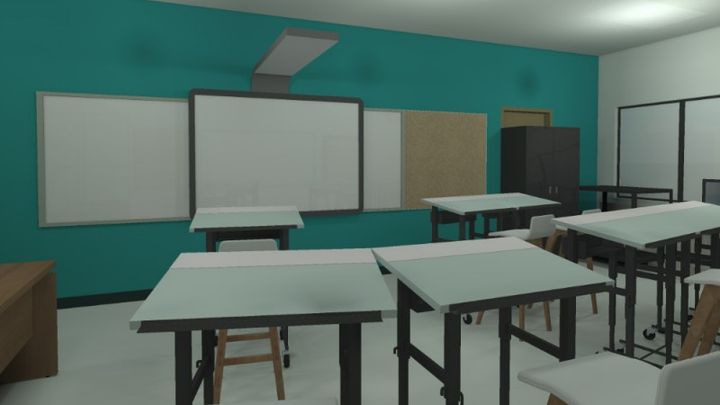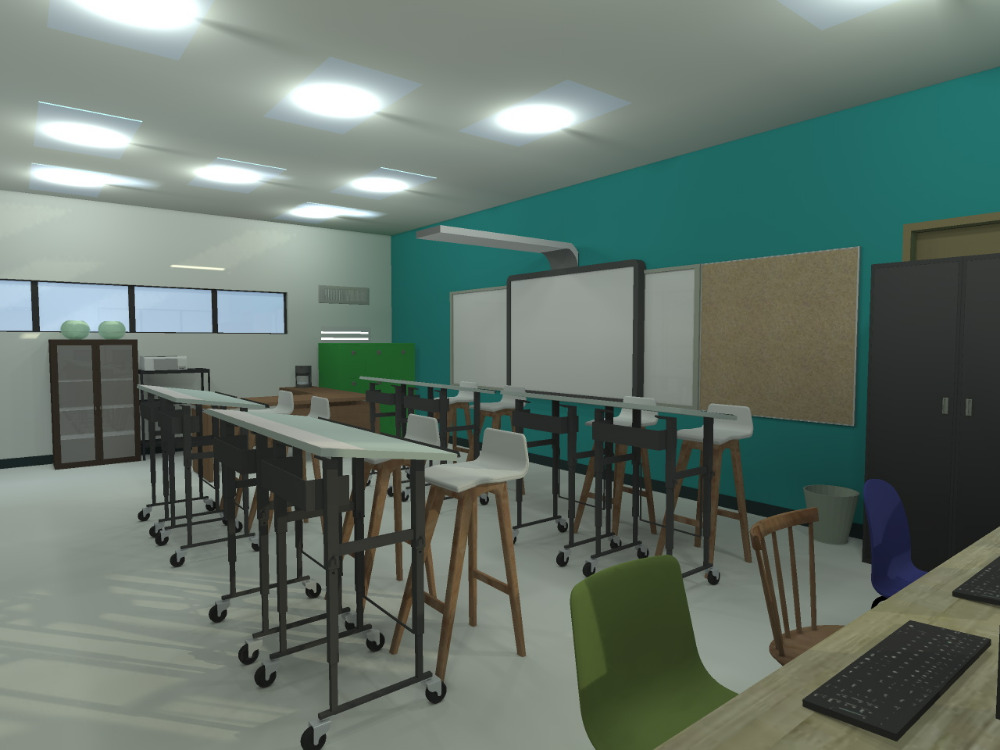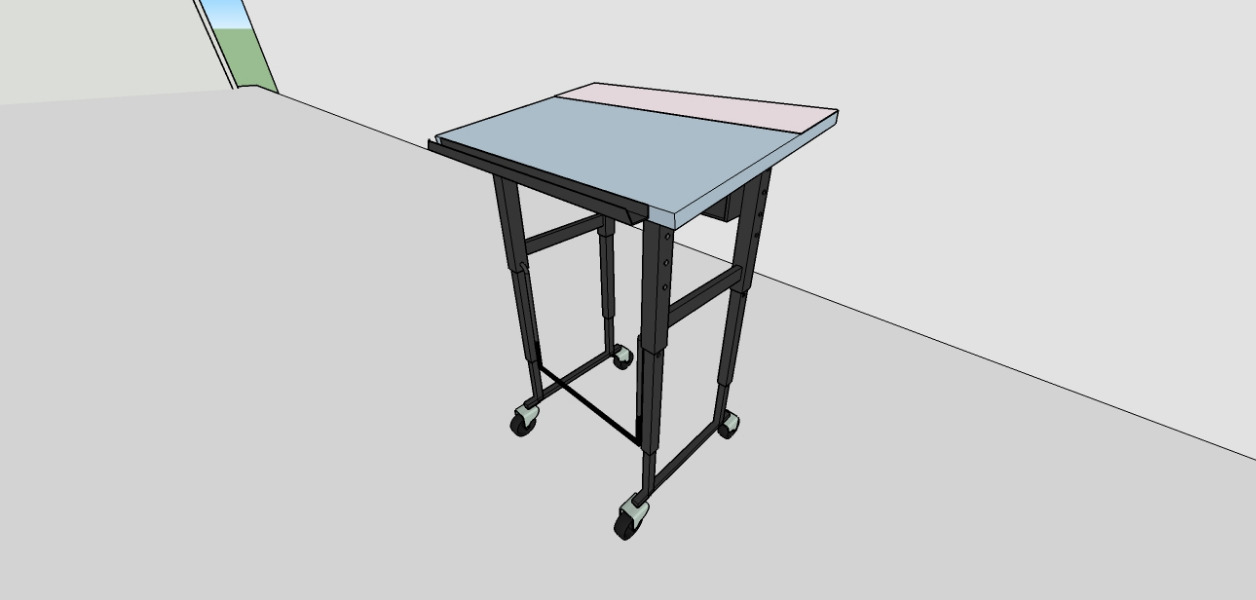
Classroom Utopia
Donation protected
“I know how to hack into the school databases,” my student told a friend in the library.
“No way,” the kid responded. “How did you learn that?”
“My teacher taught me,” he said with a smirk.
No, I did not teach my seventh and eighth grade gifted students at Delcambre High how to break into the system. Even if I knew, I obviously wouldn’t tell them. However, I did teach them how to use academic databases to find reliable, academic sources for a research paper that is part of a classroom project that we’ve been working on for the past few months.
This is my first year teaching Gifted ELA, but from the first week of school, I knew these students had an incredible potential to achieve pretty much any goal they set their minds on with the proper guidance and motivation. This knowledge propelled me to design a research unit utilizing something called Project Based Learning (PBL). The idea behind PBL is to have a goal—a project—that students need to accomplish. Then, the teacher assists them so that they may complete the project.
This year, I decided to have my students design the ideal classroom to suit contemporary students’ learning needs. This idea stemmed from my classroom observations and experiences. Early in the year, I noticed that the desks, and the typical classroom in general, was not conducive to achieve the goals teachers and students have to accomplish. The plain colors, the uncomfortable desks with their small table-tops, and the sheer rigidity of the entire classroom environment communicates to the students the message that they are not in school to enjoy themselves nor their learning. In essence, many of their classroom structures unintendedly tell students that they are not welcome to enjoy their learning experience—an experience that encompasses most of their day for the majority of the year.
This is not necessarily teachers’ nor administrators’ fault. In fact, I see teachers tirelessly decorating their classrooms with bright colors and positive messages on the walls. I know administrators, like my own at Delcambre High School, encourage teachers and—whenever the budget allows—even permit us to purchase paint and decorations using the school’s fund, with whatever little “fat” the budget may have.
In order to complete their project, each student had to choose what design element they wanted to focus on. Then, they had to write a research paper using proper MLA format, academic sources, and academic language. Finally, they worked with a graphic/interior designer from Guatemala (Mareh Abascal, with Intuito) to reenvision their classroom while applying the research-based principles. The end result can be seen in the pictures. The students researched the effects color, lighting, movement, and working structures have on both behavior and academic outcomes in school-aged students. In short, my students investigated the impact the physical environment has on student perception of their schools and on overall behavioral and academic outcomes.
After researching all those elements, they designed the ideal class, which they subsequently named “Classroom Utopia.” In the design, they also incorporated the ideal desk, which they called the "Utopic Productivity Desk." The research-based desk design includes a doodling whiteboard at the top, a 16-degree incline, casters that can lock, variable height legs (to make the desk into a sit-stand structure), and a fidget bar at the bottom. It is designed for optimal learning and class participation.

The ultimate goal of the project is to first implement the design in our classroom. Then, after evaluating the results, present it to the School Board and propose that they implement these measures in others schools around Acadiana as well.
In order to achieve the ideal classroom design, however, we first need to raise enough funds to create the desks. Our goal is to purchase desks for every student in the classroom and also apply some visual changes (color and lighting) to the physical environment of the classroom.

Don Begneaud, the founder and visioner of Begneaud, a local “industry leading precision sheet metal manufacturing company with comprehensive capabilities,” has said that he will help us achieve our goal of creating the desks right here in Acadiana. Not only would the desks and design principles benefit our own classrooms, but hopefully the Utopic Productivity Desks could be built locally, benefitting our entire community, instead of an out-of-town company.

We are asking our community, then, to help support our project. We need start-up money to create the first desks. Our goal is to raise $3,000 to get the design implemented in our classroom and the first desks built (the prototype desk will be the most expensive because it is an original design, but, once the first design is perfected, subsequent desks will be much less expensive to build). If we exceed our monetary goal, the funds will go towards building additional desks for the school. The implementation of this project will remind the students that what they do and learn in school goes beyond grades and the classroom walls. It will remind the students that they are valuable contributors in their own communities. Even though the project is still in its infancy, we hope to change the way students learn in their own classrooms—a learning that will be both effective and more enjoyable.
Thank you for your support!
Thank you to the following companies who have been helping us in this process:
Intuito: Interior Design
Begnaud's
“No way,” the kid responded. “How did you learn that?”
“My teacher taught me,” he said with a smirk.
No, I did not teach my seventh and eighth grade gifted students at Delcambre High how to break into the system. Even if I knew, I obviously wouldn’t tell them. However, I did teach them how to use academic databases to find reliable, academic sources for a research paper that is part of a classroom project that we’ve been working on for the past few months.
This is my first year teaching Gifted ELA, but from the first week of school, I knew these students had an incredible potential to achieve pretty much any goal they set their minds on with the proper guidance and motivation. This knowledge propelled me to design a research unit utilizing something called Project Based Learning (PBL). The idea behind PBL is to have a goal—a project—that students need to accomplish. Then, the teacher assists them so that they may complete the project.
This year, I decided to have my students design the ideal classroom to suit contemporary students’ learning needs. This idea stemmed from my classroom observations and experiences. Early in the year, I noticed that the desks, and the typical classroom in general, was not conducive to achieve the goals teachers and students have to accomplish. The plain colors, the uncomfortable desks with their small table-tops, and the sheer rigidity of the entire classroom environment communicates to the students the message that they are not in school to enjoy themselves nor their learning. In essence, many of their classroom structures unintendedly tell students that they are not welcome to enjoy their learning experience—an experience that encompasses most of their day for the majority of the year.
This is not necessarily teachers’ nor administrators’ fault. In fact, I see teachers tirelessly decorating their classrooms with bright colors and positive messages on the walls. I know administrators, like my own at Delcambre High School, encourage teachers and—whenever the budget allows—even permit us to purchase paint and decorations using the school’s fund, with whatever little “fat” the budget may have.
In order to complete their project, each student had to choose what design element they wanted to focus on. Then, they had to write a research paper using proper MLA format, academic sources, and academic language. Finally, they worked with a graphic/interior designer from Guatemala (Mareh Abascal, with Intuito) to reenvision their classroom while applying the research-based principles. The end result can be seen in the pictures. The students researched the effects color, lighting, movement, and working structures have on both behavior and academic outcomes in school-aged students. In short, my students investigated the impact the physical environment has on student perception of their schools and on overall behavioral and academic outcomes.
After researching all those elements, they designed the ideal class, which they subsequently named “Classroom Utopia.” In the design, they also incorporated the ideal desk, which they called the "Utopic Productivity Desk." The research-based desk design includes a doodling whiteboard at the top, a 16-degree incline, casters that can lock, variable height legs (to make the desk into a sit-stand structure), and a fidget bar at the bottom. It is designed for optimal learning and class participation.

The ultimate goal of the project is to first implement the design in our classroom. Then, after evaluating the results, present it to the School Board and propose that they implement these measures in others schools around Acadiana as well.
In order to achieve the ideal classroom design, however, we first need to raise enough funds to create the desks. Our goal is to purchase desks for every student in the classroom and also apply some visual changes (color and lighting) to the physical environment of the classroom.

Don Begneaud, the founder and visioner of Begneaud, a local “industry leading precision sheet metal manufacturing company with comprehensive capabilities,” has said that he will help us achieve our goal of creating the desks right here in Acadiana. Not only would the desks and design principles benefit our own classrooms, but hopefully the Utopic Productivity Desks could be built locally, benefitting our entire community, instead of an out-of-town company.

We are asking our community, then, to help support our project. We need start-up money to create the first desks. Our goal is to raise $3,000 to get the design implemented in our classroom and the first desks built (the prototype desk will be the most expensive because it is an original design, but, once the first design is perfected, subsequent desks will be much less expensive to build). If we exceed our monetary goal, the funds will go towards building additional desks for the school. The implementation of this project will remind the students that what they do and learn in school goes beyond grades and the classroom walls. It will remind the students that they are valuable contributors in their own communities. Even though the project is still in its infancy, we hope to change the way students learn in their own classrooms—a learning that will be both effective and more enjoyable.
Thank you for your support!
Thank you to the following companies who have been helping us in this process:
Intuito: Interior Design
Begnaud's
Organizer and beneficiary
Gabriela Abascal Bollich
Organizer
Delcambre, LA
Gifted Students @DHS
Beneficiary